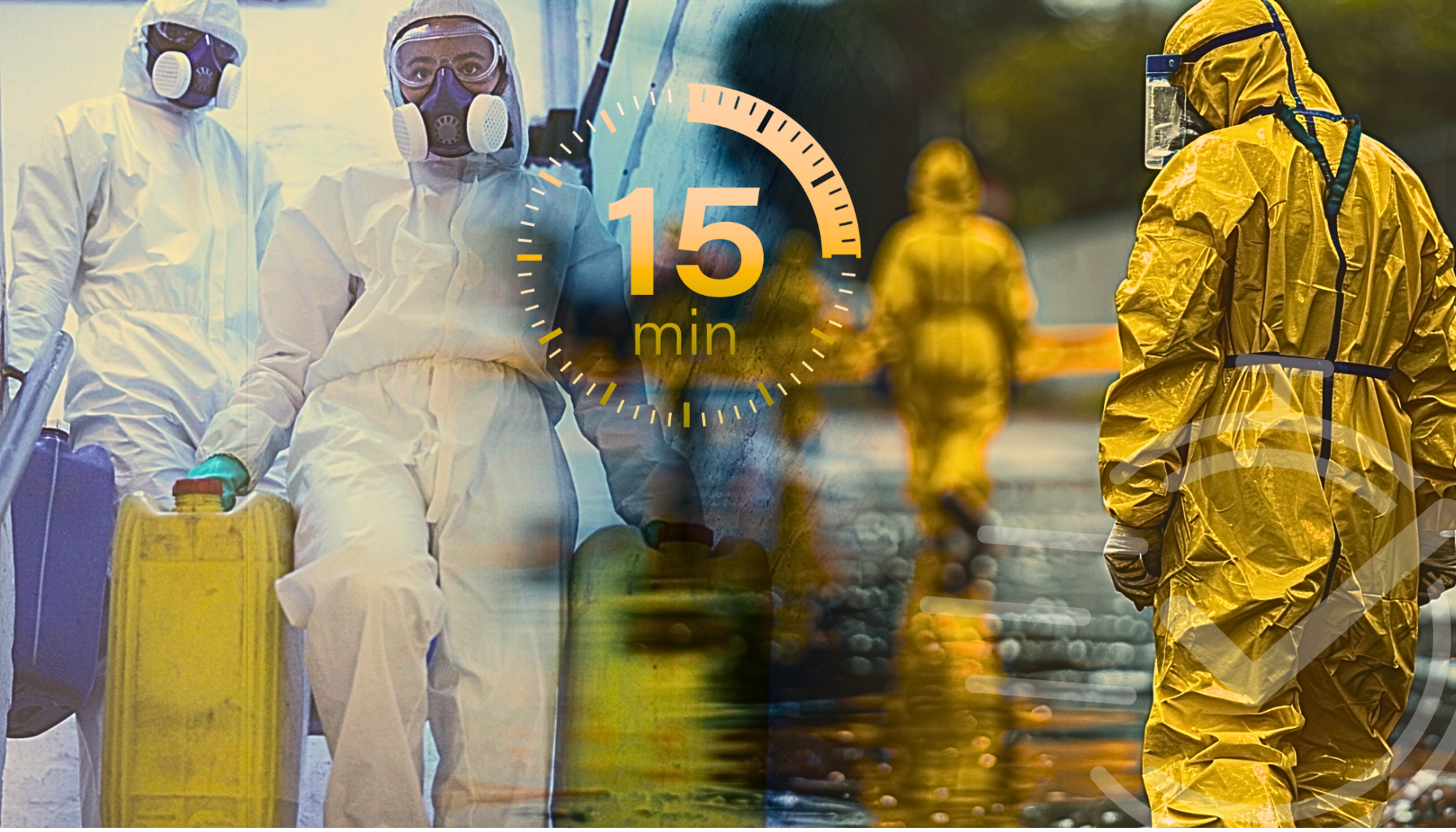Quick Read: 15-Minute Spill Response Readiness
-
15-Minute Rule – Teams must respond to hazardous spills within 15 minutes to reduce harm.
-
Trained Teams – Employees need hands-on training in spill response and PPE use.
-
Right Gear – Spill kits should be accessible, well-stocked, and specific to site hazards.
-
Practice Makes Prepared – Regular drills help ensure quick, confident action in real events.
-
Stay Compliant – Following OSHA standards builds a strong safety culture and avoids violations.
Hazardous spills don’t wait for anyone. When something goes wrong, the window to respond and contain the danger is small—and it closes fast. In the world of hazardous waste operations, every minute counts. That’s why it’s not just a good question to ask, it’s the right one: can your team respond within 15 minutes of a spill?
And more importantly - are you absolutely sure?
Let’s break it down.
What does OSHA expect when it comes to spill response time?
The OSHA HAZWOPER standard (29 CFR 1910.120) lays out the framework for handling hazardous materials incidents. While the standard doesn’t put a hard number on response time, it does make one thing very clear: employers must have an emergency response plan in place that ensures a timely and effective response.
So where does the 15-minute idea come from?
-
Many industry professionals use 15 minutes as a realistic benchmark for acceptable response time in a real-world emergency.
-
It’s enough time for trained personnel to suit up, grab the gear, and get to the scene - if they’re truly ready.
-
Delays beyond that can lead to increased risk of exposure, environmental damage, and serious non-compliance issues.
Why 15 minutes matters more than you think
Even if 15 minutes isn’t written in stone by OSHA, regulators aren’t going to wait around for you to check your calendar. If your emergency response plan is missing key components—or worse, your team doesn’t know what the plan is - you’re already behind.
Here’s what happens when teams aren’t ready:
-
Confusion at the scene
-
Delayed containment and cleanup
-
Increased risk to workers and first responders
-
Potential exposure to toxic or corrosive substances
-
Possible OSHA citations, fines, or worse
Think your team is ready? Prove it.
You don’t find out how prepared your crew is by reading the emergency response binder—you find out during a drill.
Here are a few signs your team is actually ready:
-
They know who’s in charge and what their role is
-
They’ve been trained in spill response procedures specific to your site
-
Response gear is not only available, but easily accessible and maintained
-
Communication protocols are clearly understood and practiced
-
You’ve timed your response - and it comes in under 15 minutes
What if you’re not there yet?
Then now’s the time to fix it. Hazardous spills aren’t a “maybe someday” scenario. If you handle or store hazardous substances, you need to treat emergency response like it’s going to happen. Because one day, it probably will.
Start with:
-
Reviewing your emergency response plan
-
Conducting regular drills (and actually timing them)
-
Verifying your team’s HAZWOPER training is up to date
-
Checking that your response equipment is ready to go
Being “pretty sure” isn’t enough. When a spill happens, you need to be certain. Fifteen minutes is the line between control and chaos—make sure your team’s ready to be on the right side of it.
Need HAZWOPER training or a refresher for your team?
We offer OSHA-compliant HAZWOPER training to help keep your crew confident, and compliant.
Call us at 303-537-5832 to schedule a session or learn more.















